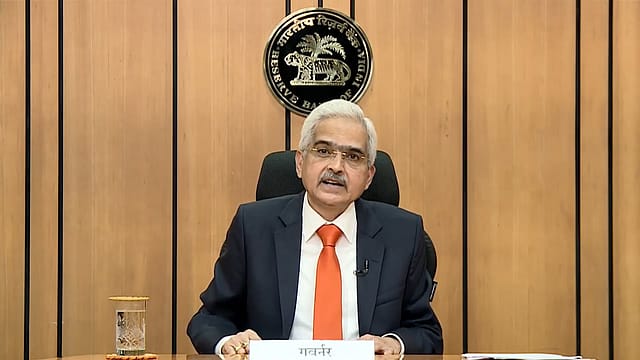Indian economy resilient despite hostile challenges: Shaktikanta Das
ADVERTISEMENT

RBI governor Shakatikanta Das, during the 22nd FIMMDA-PDAI Annual Conference today, said the global economy is still marred by shocks and uncertainty, and financial markets remain volatile and the geopolitical situation continues to be tense. The governor said despite hostile and uncertain challenges, the Indian economy remains resilient, drawing strength from its macroeconomic fundamentals.
"Banks and corporates are healthier than before the crisis. Bank credit is growing by double digits. India is widely seen as a bright spot in an otherwise gloomy world. Our inflation remains elevated, but there has been a welcome softening during November and December 2022," Das said.
Core inflation, however, remains sticky and elevated, he added. "The worst for the global economy, both in terms of growth and inflation, seems to be behind us." Notably, India's headline retail inflation eased to a one-year low of 5.72% in December 2022, down from 5.88% in November 2022, thus staying below the RBI's upper threshold of 6% for the second month in a row.
December 2025
The annual Fortune 500 India list, the definitive compendium of corporate performance, is out. This year, the cumulative revenue of the Fortune 500 India companies has breached $2 trillion for the first time. Plus, find out which are the Best B-schools in India.
He said in the aftermath of multiple shocks, the global economy is projected to contract significantly in 2023. He thinks high policy rates will for a longer duration appear to be a distinct possibility, going forward. "On the growth front, projections are now veering around to a softer recession as against a severe and more widespread recession projected a few months back."
"International food, energy and commodity prices have eased but uncertainties do remain. Inflation remains high and broad-based across countries. The IMF has projected contractions in over one-third of the global economy," said the RBI governor.
Talking about the rupee's performance, Das says it remains "impressive", despite volatility. "For example, the 1-month implied volatility of the rupee touched a high of 25% during the global financial crisis on October 10, 2008, and 20% during the taper tantrum period on August 29, 2013."
India, he said, has come a long way in the development of financial markets, but this remains a work in progress. "The Reserve Bank and stakeholders like FIMMDA and PDAI need to work together and focus on certain specific areas. During the COVID-19 pandemic, however, the implied volatility peaked at 10% on March 24, 2020, and has remained well anchored thereafter."
He said in the forex markets, while corporates benefit from the tight bid-ask spreads, smaller users continue to face pricing disadvantages notwithstanding regulatory requirements for fair and transparent pricing. He added there remains a need for improvement in ensuring liquidity for retail investors in the government securities markets.
Das said the journey of Indian financial markets through the last decade has been a story of steady progress with stability. “We have been steadfast in our commitment and consistency in our approach to keep the ship stable while continuing to move ahead.” Going forward, says Das, greater challenges will emerge as the footprints of Indian banks increase in the offshore markets, the range of products expands, non-resident participation in domestic markets grows and as capital account convertibility increases.
